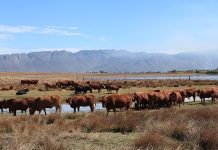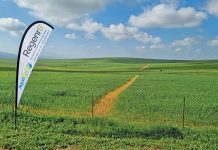The recently released second summer crop estimate for 2009 has no surprises, with only small changes from the first estimate. Maize has been adjusted only 0,2% downwards to 11 190 940t, while sunflower seeds are down 2,8% to 875 280t. Sorghum is down 4,5% to an estimated crop of 256 125t. Groundnuts have stayed the same as the first estimate at 93 910t and dry beans are expected to be 2,3% more at 62 180t.
The only major move was in soya beans, with a predicted increase of 9,8% from the first estimate to 405 035t. Nico Hawkins, manager of commodity services at Grain SA, commented, “This increase is significant when compared to the 282 000t harvested in the previous season.”
Soya bean potential
He pointed out South Africa isn’t using the full potential of soya beans, as the country has a limited soya bean oil processing capacity. “Of the 400 000t estimated crop, a 20% yield could be realised as edible oil – that’s 80 000t of value-added product manufactured locally. Currently we can only process 140 000t of soya beans into oil, meaning that 320 000t will become animal feed. But this could have been processed into human food.”
Hawkins said ideally the other 80% of soya beans should be made into oil cake after the oil manufacturing process and then used as animal feed.
Currently, South Africa can’t compete with oil cake imported from South America, but the required processing infrastructure could be established with government’s help.
This would help make the local industry globally competitive, Hawkins said. South Africa is a nett importer of edible oils with local consumption of over 1 million tons annually. “More processing capacity for soya bean oil would unlock the value of the crop, stimulating producers to establish more,” Hawkins said.
Neels Ferreira, chairperson of Agri SA, agreed with Hawkins about soya beans’ potential and said Mpumalanga and the Eastern and Western Free State areas were particularly suitable for production.
But he added the current pricing model is discouraging producers from establishing more of this crop.
“The domestic soya bean price is based on the import parity price of oil cake, and not on the bean price, so lower prices are paid for locally produced beans,” Ferreira explained. – Wouter Kriel








